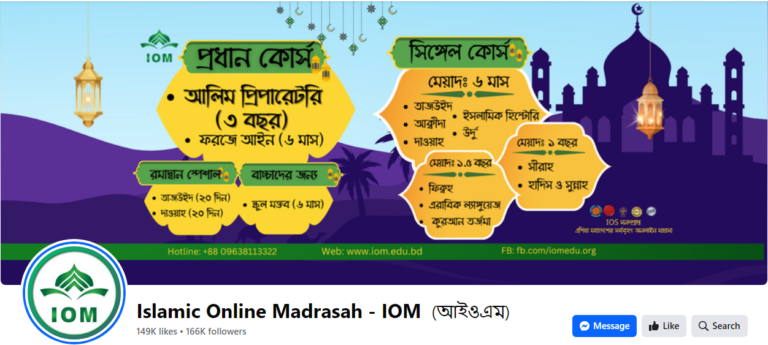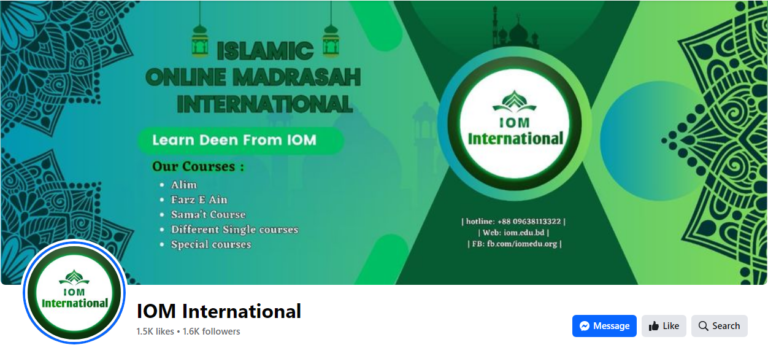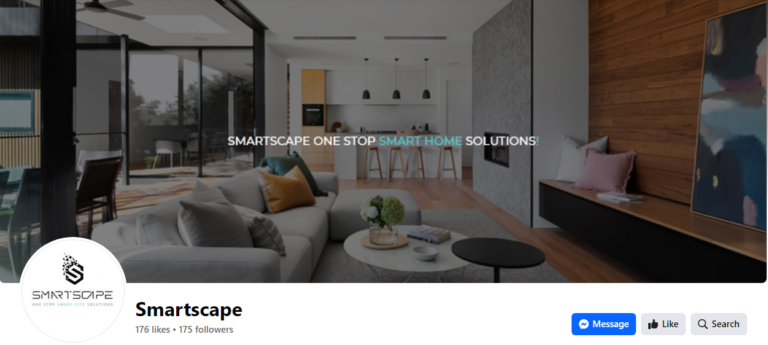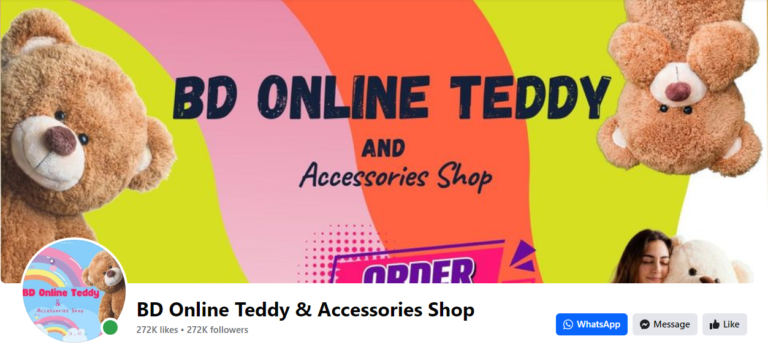Hello, my name is
MR JILANI
Digital Marketer
- hello@mrjilani.com
- +880 1914007811

PROUDLY DISPLAYING MY TRUSTED CLIENTELE: LEADING BRANDS WHO TRUST ME!








About me
I'm Mr Jilani, a global digital marketer with 6 years of experience in Facebook and Google platforms. Explore impactful campaigns at MrJilani.com for a comprehensive online presence worldwide
A Global Digital Marketer
Cultural Awareness:
- Understanding cultural nuances is crucial when targeting a global audience. A global digital marketer should be culturally sensitive and aware of regional differences.
Multilingual Proficiency:
- Proficiency in multiple languages is advantageous for crafting content that resonates with diverse audiences.
Data Analysis:
- Strong analytical skills are essential for interpreting global data, measuring campaign performance, and making data-driven decisions.
Cross-Cultural Communication:
- Effective communication across different cultures is vital. This includes adapting content, tone, and messaging to suit diverse audiences.
Global SEO Expertise:
- Understanding international search engine optimization (SEO) strategies and local search trends is crucial for global visibility.
Global Social Media Knowledge:
- Being well-versed in global social media platforms and trends helps in creating engaging and culturally relevant content.
Adaptability:
- The ability to adapt strategies based on regional preferences, market conditions, and emerging trends is a key trait for global digital marketers.
Responsibilities:
Global Campaign Planning:
- Develop comprehensive digital marketing strategies that consider global market trends, target audience behaviors, and cultural preferences.
Localization of Content:
- Adapt marketing materials, website content, and advertising campaigns to suit different languages and cultural contexts.
Cross-Border SEO:
- Implement SEO strategies that take into account different search behaviors, languages, and regional search engine preferences.
Global Social Media Management:
- Manage social media accounts on a global scale, ensuring consistent messaging while tailoring content to specific regions.
Paid Advertising:
- Plan and execute global paid advertising campaigns, considering regional advertising platforms, cultural sensitivities, and market nuances.
Data Analytics and Reporting:
- Monitor and analyze the performance of global campaigns, providing detailed reports with insights and recommendations for optimization.
Cross-Functional Collaboration:
- Collaborate with various teams, including content creators, designers, developers, and regional marketing teams, to ensure a cohesive global strategy.
Compliance and Regulations:
- Stay informed about international data protection regulations, advertising standards, and digital marketing laws to ensure compliance.
Strategies:
Segmentation and Targeting:
- Segment the global audience based on demographics, behaviors, and preferences to create targeted and personalized campaigns.
Global Brand Consistency:
- Maintain a consistent global brand image while tailoring messaging to suit local contexts.
Localized Landing Pages:
- Create region-specific landing pages to enhance user experience and relevance.
Global Influencer Collaborations:
- Partner with influencers who have a global appeal or regional influence to expand reach.
Mobile Optimization:
- Optimize digital content and campaigns for mobile devices, considering the prevalence of mobile usage worldwide.
Agile Marketing:
- Embrace an agile marketing approach to quickly adapt to changes in the global market landscape.
Continuous Learning:
- Stay updated on global trends, emerging technologies, and shifts in consumer behavior to remain innovative and competitive.
A successful global digital marketer combines strategic thinking, cultural awareness, and technical expertise to create impactful campaigns that resonate with diverse audiences around the world.
What I do
Google Ads Campaign
Google's marketing strategy is multifaceted, encompassing a range of products and services. While specific strategies may vary across different business units within Google, here are some key elements of Google's overall marketing approach: 1. Search Engine Dominance: Google's primary product is its search engine. The company focuses on maintaining and improving its search algorithm to provide the most relevant results to users. The marketing strategy revolves around promoting Google Search as the go-to platform for information, encouraging users to "Google" whenever they have a query. 2. AdWords (Now Google Ads): Google Ads is a significant revenue source for the company. Businesses can bid for advertising space in Google's search results and on partner websites through the Google Display Network. Google encourages businesses to use Google Ads to reach their target audience effectively. 3. YouTube: As a subsidiary of Google, YouTube is an essential part of the company's marketing strategy. Google leverages YouTube as a platform for advertising and content distribution. YouTube Ads are integrated with Google Ads, allowing advertisers to reach a vast audience through video content. 4. Google Cloud Platform: Google targets businesses with its cloud computing services. The marketing strategy involves promoting the scalability, performance, and innovation of Google Cloud Platform (GCP). Educational content, case studies, and partnerships are used to showcase the capabilities and advantages of GCP. 5. Android: Google's mobile operating system, Android, is a key element of its strategy. Google emphasizes Android's open-source nature, customization options, and integration with Google services. App developers are encouraged to create apps for the Android ecosystem, contributing to the platform's growth. 6. Hardware Products: Google promotes its hardware products, including Pixel smartphones, Nest smart home devices, and Chromecast, through a combination of online and offline marketing. Product launches, partnerships, and advertising campaigns help create awareness and drive sales. 7. Chrome and Chromebooks: Google Chrome, the web browser, is promoted as a fast and secure option. Chromebooks, running on Chrome OS, are positioned as affordable and easy-to-use devices. Educational campaigns highlight the simplicity and efficiency of the Chrome ecosystem. 8. Free Services with Advertising: Google offers a wide range of free services (e.g., Gmail, Google Drive, Google Maps) supported by advertising. This strategy allows Google to gather user data for targeted advertising. The company emphasizes the convenience and quality of its free services to attract and retain users. 9. Partnerships and Collaborations: Google engages in strategic partnerships and collaborations to expand its reach and influence. Examples include partnerships with mobile manufacturers for pre-installed Google apps and collaborations with content creators on YouTube. 10. Innovation and Experimentation: Google encourages a culture of innovation, often highlighted by projects from Google X and the experimentation with new technologies such as augmented reality, artificial intelligence, and self-driving cars. High-profile projects showcase Google's commitment to pushing technological boundaries. Google's marketing strategy is characterized by its focus on user-centric solutions, data-driven advertising, and continuous innovation across various business units. The company aims to be at the forefront of technology and to provide valuable services that enhance the lives of users and businesses alike.
Instagram ADS campaign
Developing an effective Instagram marketing strategy involves creating compelling content, engaging with your audience, and leveraging the platform's features. Here's a step-by-step guide to help you formulate a successful Instagram marketing strategy: 1. Define Your Objectives: Clearly outline your goals. Whether it's increasing brand awareness, driving website traffic, boosting engagement, or driving sales, having well-defined objectives will guide your strategy. 2. Understand Your Audience: Identify your target audience on Instagram. Understand their demographics, interests, and behaviors. This information will help tailor your content to resonate with your audience. 3. Optimize Your Instagram Profile: Ensure your Instagram profile is complete and optimized. Use a recognizable profile picture, write a compelling bio, and include a link to your website or landing page. 4. Create High-Quality Content: Focus on visually appealing and high-quality content. Use a consistent visual theme or style to maintain brand identity. Experiment with various content types, including photos, videos, carousel posts, and Stories. 5. Utilize Instagram Features: Leverage Instagram features like Stories, IGTV, Reels, and Shopping. Each feature provides a unique way to connect with your audience and showcase your brand. 6. Use Hashtags Strategically: Incorporate relevant and trending hashtags in your posts to increase discoverability. Create branded hashtags to encourage user-generated content and community engagement. 7. Engage with Your Audience: Respond to comments on your posts, direct messages, and engage with content from others in your industry or community. Building a community on Instagram is crucial for long-term success. 8. Collaborate with Influencers: Partner with influencers who align with your brand. Influencers can help you reach a wider audience and add authenticity to your brand through their recommendations. 9. Run Instagram Ads: Utilize Instagram's advertising platform to target specific demographics, interests, and behaviors. Experiment with different ad formats, including photo ads, video ads, carousel ads, and Stories ads. 10. Implement Instagram Analytics: Regularly analyze Instagram Insights to understand the performance of your content. Track metrics like reach, engagement, and follower growth to refine your strategy. 11. Post Consistently: Maintain a consistent posting schedule to keep your audience engaged. Use scheduling tools to plan your content in advance. 12. Host Contests and Giveaways: Encourage user participation by organizing contests or giveaways. This can boost engagement, increase your reach, and attract new followers. 13. Showcase Behind-the-Scenes: Humanize your brand by offering a behind-the-scenes look at your business. This helps build a personal connection with your audience. 14. Monitor Trends and Stay Updated: Keep an eye on Instagram trends, new features, and algorithm changes. Staying updated allows you to adapt your strategy to maximize its effectiveness. 15. Track and Adjust: Regularly evaluate the performance of your Instagram strategy. Identify what works well and adjust your approach accordingly. A data-driven approach is crucial for ongoing success. By combining these elements, you can create a well-rounded Instagram marketing strategy that aligns with your business goals and resonates with your target audience. Remember that authenticity, creativity, and engagement are key components of a successful Instagram presence.
Facebook Ads Campaign
Creating an effective Facebook marketing strategy involves a combination of planning, content creation, engagement, and analysis. Here's a step-by-step guide to help you develop a successful Facebook marketing strategy: 1. Define Your Goals: Clearly outline what you want to achieve with your Facebook marketing efforts. Common goals include increasing brand awareness, driving website traffic, generating leads, and boosting sales. 2. Identify Your Target Audience: Understand your target audience's demographics, interests, and behaviors. Use Facebook Insights and other analytics tools to gather data about your current audience and refine your targeting. 3. Create a Facebook Business Page: Ensure your business page is complete with accurate information, a compelling profile picture, and an engaging cover photo. Use keywords in your page description to improve discoverability. 4. Develop a Content Strategy: Plan a content calendar that includes a mix of posts, images, videos, and other media types. Your content should be relevant, valuable, and aligned with your brand. Consider using a variety of post types, such as educational content, behind-the-scenes looks, user-generated content, and promotions. 5. Utilize Facebook Ads: Facebook Ads can help you reach a wider audience. Create targeted ad campaigns based on demographics, interests, and behaviors. Experiment with different ad formats, such as carousel ads, video ads, and lead generation ads. 6. Engage with Your Audience: Respond promptly to comments, messages, and reviews. Encourage user interaction through polls, questions, and contests. Building a community around your brand helps foster trust and loyalty. 7. Leverage Facebook Groups: Consider creating or participating in relevant Facebook Groups related to your industry or niche. Groups can be a powerful way to engage with your audience, share expertise, and build relationships. 8. Monitor Analytics: Regularly review Facebook Insights to track the performance of your content and campaigns. Analyze metrics such as reach, engagement, and conversion rates to understand what works and make data-driven decisions. 9. Implement Retargeting: Use Facebook Pixel to set up retargeting campaigns. This allows you to reach users who have visited your website or interacted with your content but haven't completed a desired action, such as making a purchase. 10. Stay Updated on Facebook Trends: Keep abreast of the latest features, algorithm changes, and trends on Facebook. The platform evolves, and staying informed ensures that you can adapt your strategy accordingly. 11. Test and Optimize: Regularly test different elements of your strategy, including ad copy, visuals, and targeting parameters. Optimize your campaigns based on the results to continuously improve performance. By combining these elements into a cohesive strategy, you can build a strong presence on Facebook and achieve your marketing objectives. Keep in mind that flexibility and adaptation are essential in the ever-changing landscape of social media.
Facebook Ads Campaign
Creating an effective Facebook marketing strategy involves a combination of planning, content creation, engagement, and analysis. Here's a step-by-step guide to help you develop a successful Facebook marketing strategy: 1. Define Your Goals: Clearly outline what you want to achieve with your Facebook marketing efforts. Common goals include increasing brand awareness, driving website traffic, generating leads, and boosting sales. 2. Identify Your Target Audience: Understand your target audience's demographics, interests, and behaviors. Use Facebook Insights and other analytics tools to gather data about your current audience and refine your targeting. 3. Create a Facebook Business Page: Ensure your business page is complete with accurate information, a compelling profile picture, and an engaging cover photo. Use keywords in your page description to improve discoverability. 4. Develop a Content Strategy: Plan a content calendar that includes a mix of posts, images, videos, and other media types. Your content should be relevant, valuable, and aligned with your brand. Consider using a variety of post types, such as educational content, behind-the-scenes looks, user-generated content, and promotions. 5. Utilize Facebook Ads: Facebook Ads can help you reach a wider audience. Create targeted ad campaigns based on demographics, interests, and behaviors. Experiment with different ad formats, such as carousel ads, video ads, and lead generation ads. 6. Engage with Your Audience: Respond promptly to comments, messages, and reviews. Encourage user interaction through polls, questions, and contests. Building a community around your brand helps foster trust and loyalty. 7. Leverage Facebook Groups: Consider creating or participating in relevant Facebook Groups related to your industry or niche. Groups can be a powerful way to engage with your audience, share expertise, and build relationships. 8. Monitor Analytics: Regularly review Facebook Insights to track the performance of your content and campaigns. Analyze metrics such as reach, engagement, and conversion rates to understand what works and make data-driven decisions. 9. Implement Retargeting: Use Facebook Pixel to set up retargeting campaigns. This allows you to reach users who have visited your website or interacted with your content but haven't completed a desired action, such as making a purchase. 10. Stay Updated on Facebook Trends: Keep abreast of the latest features, algorithm changes, and trends on Facebook. The platform evolves, and staying informed ensures that you can adapt your strategy accordingly. 11. Test and Optimize: Regularly test different elements of your strategy, including ad copy, visuals, and targeting parameters. Optimize your campaigns based on the results to continuously improve performance. By combining these elements into a cohesive strategy, you can build a strong presence on Facebook and achieve your marketing objectives. Keep in mind that flexibility and adaptation are essential in the ever-changing landscape of social media.
Facebook Ads Campaign
Creating an effective Facebook marketing strategy involves a combination of planning, content creation, engagement, and analysis. Here's a step-by-step guide to help you develop a successful Facebook marketing strategy: 1. Define Your Goals: Clearly outline what you want to achieve with your Facebook marketing efforts. Common goals include increasing brand awareness, driving website traffic, generating leads, and boosting sales. 2. Identify Your Target Audience: Understand your target audience's demographics, interests, and behaviors. Use Facebook Insights and other analytics tools to gather data about your current audience and refine your targeting. 3. Create a Facebook Business Page: Ensure your business page is complete with accurate information, a compelling profile picture, and an engaging cover photo. Use keywords in your page description to improve discoverability. 4. Develop a Content Strategy: Plan a content calendar that includes a mix of posts, images, videos, and other media types. Your content should be relevant, valuable, and aligned with your brand. Consider using a variety of post types, such as educational content, behind-the-scenes looks, user-generated content, and promotions. 5. Utilize Facebook Ads: Facebook Ads can help you reach a wider audience. Create targeted ad campaigns based on demographics, interests, and behaviors. Experiment with different ad formats, such as carousel ads, video ads, and lead generation ads. 6. Engage with Your Audience: Respond promptly to comments, messages, and reviews. Encourage user interaction through polls, questions, and contests. Building a community around your brand helps foster trust and loyalty. 7. Leverage Facebook Groups: Consider creating or participating in relevant Facebook Groups related to your industry or niche. Groups can be a powerful way to engage with your audience, share expertise, and build relationships. 8. Monitor Analytics: Regularly review Facebook Insights to track the performance of your content and campaigns. Analyze metrics such as reach, engagement, and conversion rates to understand what works and make data-driven decisions. 9. Implement Retargeting: Use Facebook Pixel to set up retargeting campaigns. This allows you to reach users who have visited your website or interacted with your content but haven't completed a desired action, such as making a purchase. 10. Stay Updated on Facebook Trends: Keep abreast of the latest features, algorithm changes, and trends on Facebook. The platform evolves, and staying informed ensures that you can adapt your strategy accordingly. 11. Test and Optimize: Regularly test different elements of your strategy, including ad copy, visuals, and targeting parameters. Optimize your campaigns based on the results to continuously improve performance. By combining these elements into a cohesive strategy, you can build a strong presence on Facebook and achieve your marketing objectives. Keep in mind that flexibility and adaptation are essential in the ever-changing landscape of social media.
Facebook Ads Campaign
Creating an effective Facebook marketing strategy involves a combination of planning, content creation, engagement, and analysis. Here's a step-by-step guide to help you develop a successful Facebook marketing strategy: 1. Define Your Goals: Clearly outline what you want to achieve with your Facebook marketing efforts. Common goals include increasing brand awareness, driving website traffic, generating leads, and boosting sales. 2. Identify Your Target Audience: Understand your target audience's demographics, interests, and behaviors. Use Facebook Insights and other analytics tools to gather data about your current audience and refine your targeting. 3. Create a Facebook Business Page: Ensure your business page is complete with accurate information, a compelling profile picture, and an engaging cover photo. Use keywords in your page description to improve discoverability. 4. Develop a Content Strategy: Plan a content calendar that includes a mix of posts, images, videos, and other media types. Your content should be relevant, valuable, and aligned with your brand. Consider using a variety of post types, such as educational content, behind-the-scenes looks, user-generated content, and promotions. 5. Utilize Facebook Ads: Facebook Ads can help you reach a wider audience. Create targeted ad campaigns based on demographics, interests, and behaviors. Experiment with different ad formats, such as carousel ads, video ads, and lead generation ads. 6. Engage with Your Audience: Respond promptly to comments, messages, and reviews. Encourage user interaction through polls, questions, and contests. Building a community around your brand helps foster trust and loyalty. 7. Leverage Facebook Groups: Consider creating or participating in relevant Facebook Groups related to your industry or niche. Groups can be a powerful way to engage with your audience, share expertise, and build relationships. 8. Monitor Analytics: Regularly review Facebook Insights to track the performance of your content and campaigns. Analyze metrics such as reach, engagement, and conversion rates to understand what works and make data-driven decisions. 9. Implement Retargeting: Use Facebook Pixel to set up retargeting campaigns. This allows you to reach users who have visited your website or interacted with your content but haven't completed a desired action, such as making a purchase. 10. Stay Updated on Facebook Trends: Keep abreast of the latest features, algorithm changes, and trends on Facebook. The platform evolves, and staying informed ensures that you can adapt your strategy accordingly. 11. Test and Optimize: Regularly test different elements of your strategy, including ad copy, visuals, and targeting parameters. Optimize your campaigns based on the results to continuously improve performance. By combining these elements into a cohesive strategy, you can build a strong presence on Facebook and achieve your marketing objectives. Keep in mind that flexibility and adaptation are essential in the ever-changing landscape of social media.






